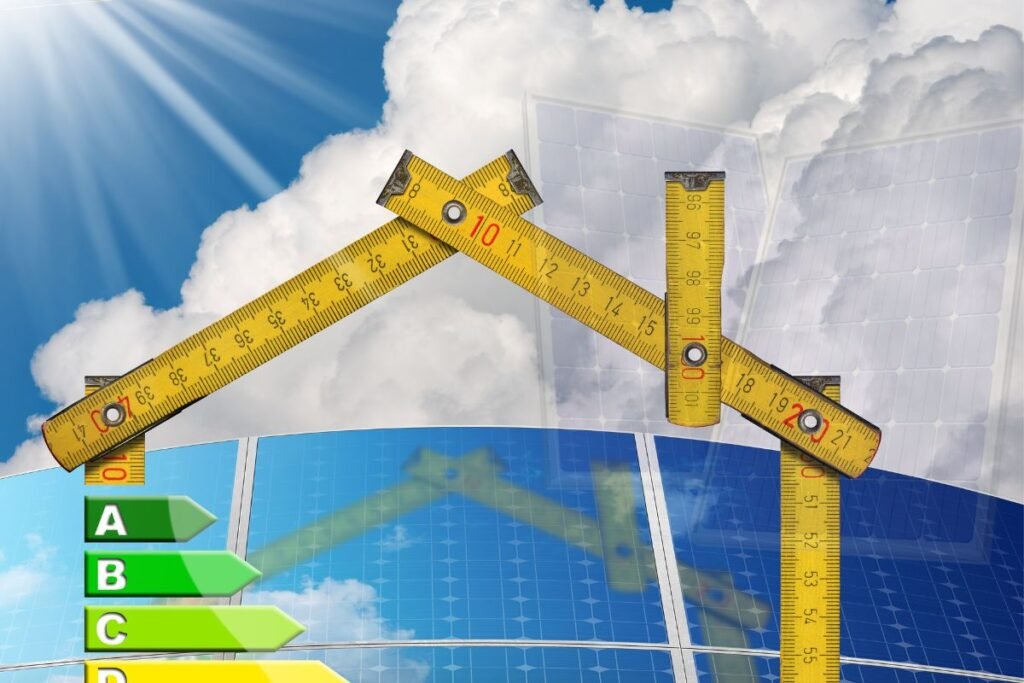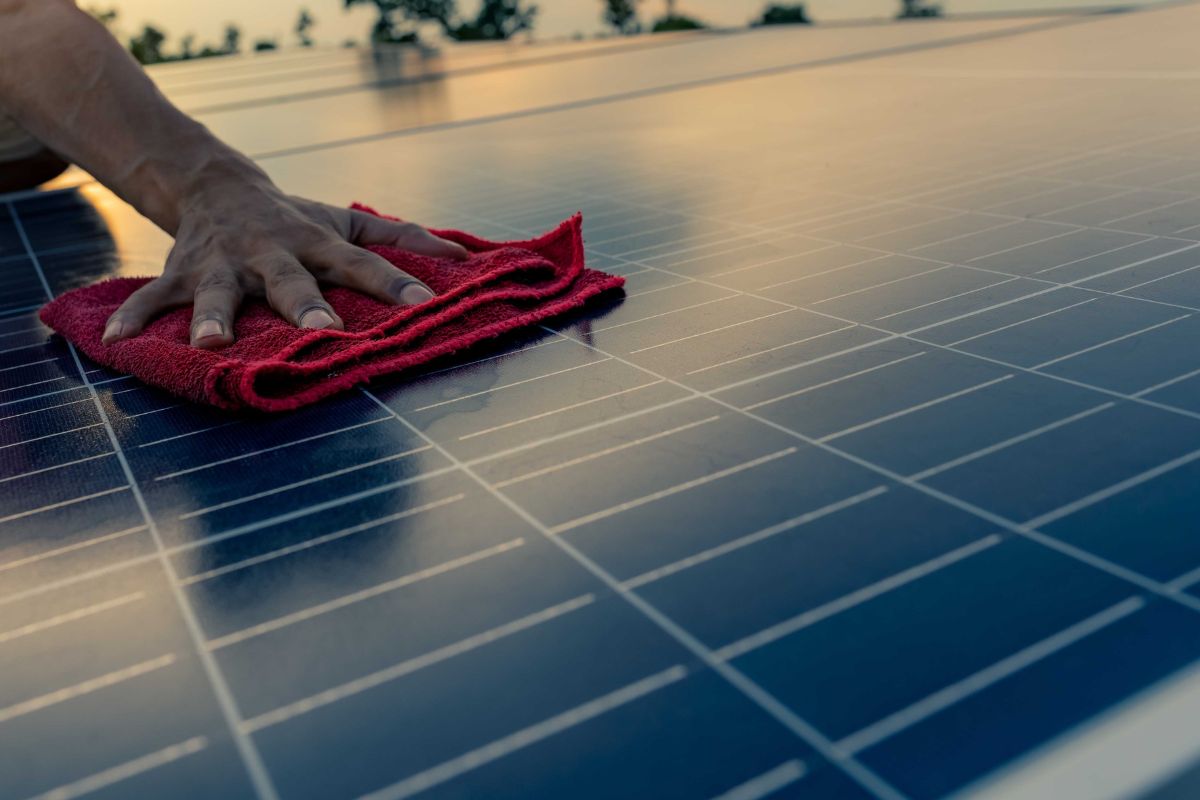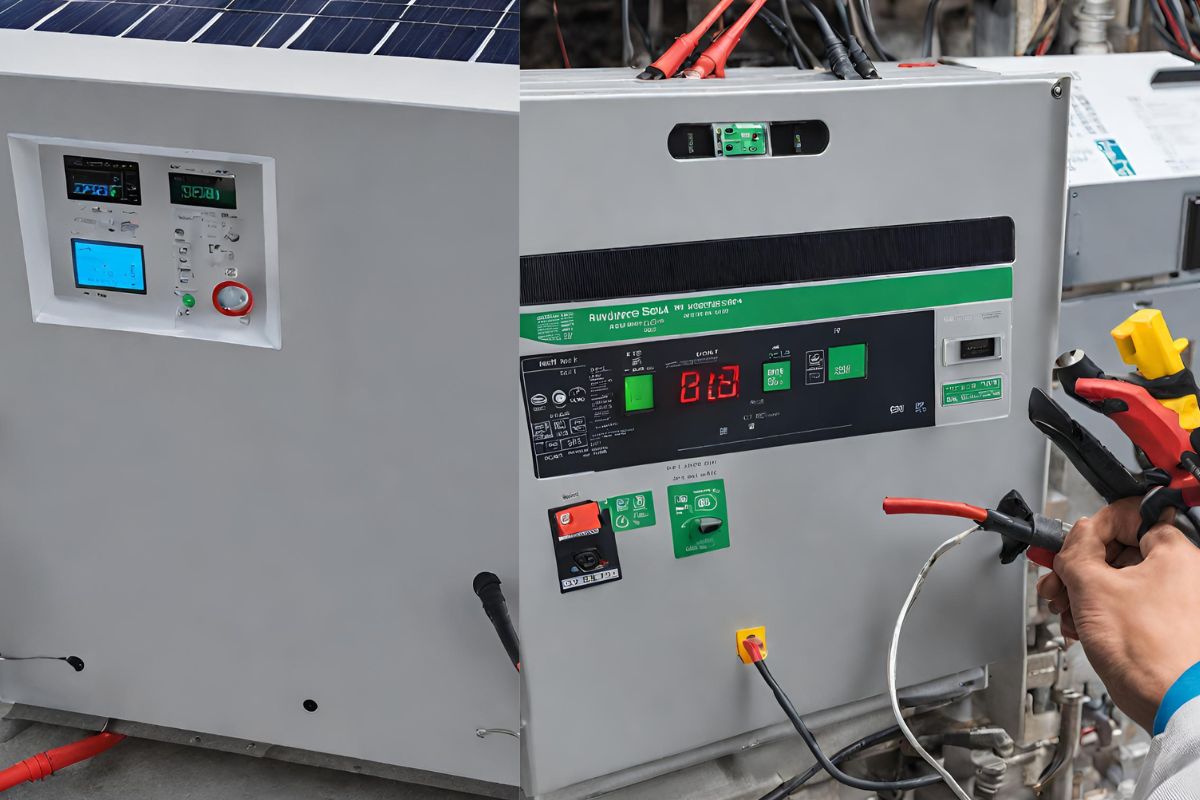Bifacial solar panels can produce electrical current in both the front surface and the real. It makes them high in efficiency when it comes to electrical production compared to monofacial.
I could enjoy the efficiency of the bifacial solar panel I installed in my factory and wanted to change the monoficial panel in my home.
However, I discovered their performance benefits. It can not be fully realized in my environment.
Because of the limited reflective ground surface. Which normally reduces their effectiveness.
With my experience, I could find a way around that and still get its total efficiency, which I want to discuss with you in this article.
Here is an important article on bifacial solar panel structure.
What Is The Efficiency Of A Bifacial Solar Cell?
The bifacial cell efficiency is governed by cell design and silicon type. At the same time, the cell layout and panel design determine the entire panel’s efficiency.
The efficiency of solar energy that falls on the surface of a panel. It is transformed into electricity and is measured as normal panel efficiency.
Because of recent breakthroughs in solar cell technology, the average panel conversion efficiency has grown from 15% to over 20%.
However, bifacial solar cells can attain average efficiency levels ranging from 15% to 30%.
However, several cutting-edge bifacial systems have reported efficiencies of over 30%.
Panel size is not directly related to efficiency, as larger panels generally use more cells to achieve higher power output.
The two most common size panels use 60 or 72 cells, but some manufacturers make 96 and 104-cell panels using smaller ones.
Most residential installations use the standard 60-cell panels, while commercial and large-scale farms often use larger 72-cell panels.
The more solar radiation caused by albedo will be used, the percentage of radiation reflected by a certain surface.
The albedo reaches 35% on land and can exceed 55% on shiny surfaces.
Bifacial solar panels must be installed at a higher height from the ground.
This will allow solar radiation to be accessed and reflected towards the rear face of the panel. Thus increasing the surface area in which energy is captured.
The panels can even be installed so that the radiation bounces between them. And projects toward the opposite side of the panel.
Among the main advantages of bifacial solar panels is greater performance than in a monofacial installation, with an increase in energy production of between 5% and 30%.
Their configuration makes them perfect solar panels for places where it snows, in deserts, buildings, and homes with white roofs.
Which is better, bifacial vs Monofacial?
When it comes to solar panels, there is always the question of which is better, especially between bifacial and monofacial solar panels; the other option is the poly solar system.
Let me quickly break it down in this section. Monofacial panels are more of what you see on many rooftops around your area.
They have a solid side that can absorb sunlight from the top.
They are also good, dependable, and inexpensive solar panels, especially in areas with regular sunlight.
Whereas the bifacial panels are a little more different, they do not absorb sunlight just from one side of the panels but rather from both front and rear.
Bifacial panels can produce more power, especially with reflecting surfaces like snow and grass. Bifacial panels are an interesting advancement of the monofacial solar system.
Again, monofacial panels are old, trusted types of solar panels. Though they are less attractive than the other flexible panels, they can do the job.
Finally, your choice of solar panels will completely depend on where you want to put them and what you desire.
However, bifacial can be fantastic if you have the correct climate conditions, as my first choice.
However, you should be ready to spend more on bifacial panels.
But if you need something trustworthy, you may be better off sticking with the tried-and-true monofacial panels.
What is the yield of bifacial solar panels?
In our last section, we tried to explain the bifacial solar panels and the monofacial panels better.
Now, let us see what bifacial panels can produce in terms of electrical energy generation capacity.
We can not directly estimate the yield of bifacial solar panels because some factors can affect their performance, including the specific technology used.
The geographic location, the angle and height of installation, ground cover, and albedo reflectivity of the ground surface.
Ground cover, tilt angle, and local climate can significantly influence their performance and electricity generation.
However, Bifacial solar panels can generate additional electricity by capturing sunlight from both the front and rear sides, using the reflected light from the ground and other surfaces.
On average, studies have suggested that bifacial solar panels can yield around 5-20% compared to traditional monofacial panels. With some exceptional cases reporting even higher gains under specific conditions.
This additional energy generation can make bifacial panels attractive. Especially in locations with high albedo, such as snowy environments or areas with reflective surfaces like sand or light-colored rooftops.
However, it is important to note that the actual yield of bifacial solar panels is highly dependent on the specific circumstances of their installation.
At the end of the day, when considering the yield of bifacial solar panels. It’s crucial to assess the specific conditions of the installation site to determine their potential effectiveness and energy production.
How many watts are bifacial solar panels?
As you already know, bifacial solar panels can absorb sunlight from both sides, but they often have different wattage outputs, depending on the specific brand and model you’re looking at.
But generally speaking, bifacial panel systems range anywhere from around 300 to 400 watts per panel, although some with high efficiency are about 600 watts.
Of course, it’s always smart to check the specific ones for the particular brand you’re interested in. Some factors can influence the wattage, like the materials used and the technology incorporated.
So, it is different from a one-size-fits-all deal. But overall, they’re a great option if you’re trying to maximize the energy you can get from the sun.
What Is The Best Angle For Bifacial Solar Panels?
The best angle for bifacial solar panels depends on where you reside.
An angle closer to 0 degrees (lying flat) could be a better position, allowing the panels to absorb the most sunlight throughout the day.
If you are in a place with more seasonal changes, setting the bifacial panels at an angle between 25 and 35 degrees will be more effective.
This angle helps the panels receive more sunlight every season, considering the sun’s position changes throughout the year.
It is essential to adjust the angle to maximize the panels’ exposure to sunlight to generate more energy.
I will always advise that you consult with a solar professional who can help determine the ideal angle for your specific location.
Here are the advantages and disadvantages of the bifacial solar panel.
Increased Bifacial Solar Panel Reflectivity
We have determined the bifacial solar panels’ optimal inclination angle and position.
Let’s see how the system’s power generation can effectively increase as ground reflectivity increases.
1. Common methods for improving ground reflectivity include installing cement floors, brushing white reflecting paint, putting white gravel or pebbles, laying white reflective materials, etc.
Reflection: sand/concrete dirt, grass water, approximate reflectance may be found below, and cement floor reflectance is between 20% and 40%;
2. Power generation increases can be realized by white paint coating and other means when the double-sided modules are positioned at the optimal inclination angle on flat surfaces.
3. Avoid immediately shielding the back of the PV module by the bracket or keep the gap between the frame and the rear of the module no less than 5cm;
4. Avoid near shielding the unit’s back with bundled boxes, transformers, wires, etc. Suppose you live in a snow environment in high latitudes.
In that case, the snow on the ground will reflect a lot of sunlight onto the rear of the PV panel, considerably increasing the PV panel’s power output and quickly melting the snow on the module.
How do you maximize bifacial solar panels?
Maximizing the efficiency of bifacial solar panels entails a few simple measures that can help boost their power production.
To begin, it is critical to evaluate their positioning. These panels perform best when installed at the ideal tilt and height to capture the most sunlight throughout the day.
They function best in areas with little shadowing, so keeping them clear of obstacles is critical. Another strategy is to capitalize on their distinct design.
Bifacial panels may collect sunlight from both the front and rear, positioning them so that reflected light from the ground or other surfaces can be used to increase their output.
This may include mounting them higher than standard panels to catch more reflected light.
Regular care is required to clean these panels and remove dirt or dust. By putting these practical procedures in place, you can completely maximize the potential of bifacial solar panels.
What is the maximum power in a Bifacial solar panel?
The maximum power output of a bifacial solar panel is determined by several aspects, such as its size, generation, and panel efficiency.
However, technological and manufacturing process breakthroughs may have significantly increased the maximum power output of bifacial solar panels since then.
Previously, the high efficiency of bifacial solar panels could get power outputs ranging from 400 to 550 watts, depending on the type of panels.
Conclusion
As a module that can generate electricity on both the front and back sides, the bifacial system is not only designed to generate electricity on the front side.
Still, it can also receive scattered and reflected light from the environment on the back side to generate electricity.
So, it has the highest comprehensive power generation efficiency. If the surface is non-reflective or dark-colored, consider applying a white, reflective material to the cell structure surface.
Note that because bifacial modules will increase the output power, the supply to the inverter cannot be increased.
It is important to note that while bifacial solar panels give high efficiency, the choice of solar panels also depends on individual energy needs.
See the difference between bifacial solar panels vs. monocrystalline and polycrystalline.



